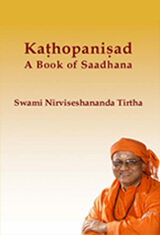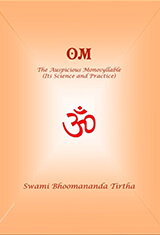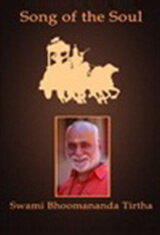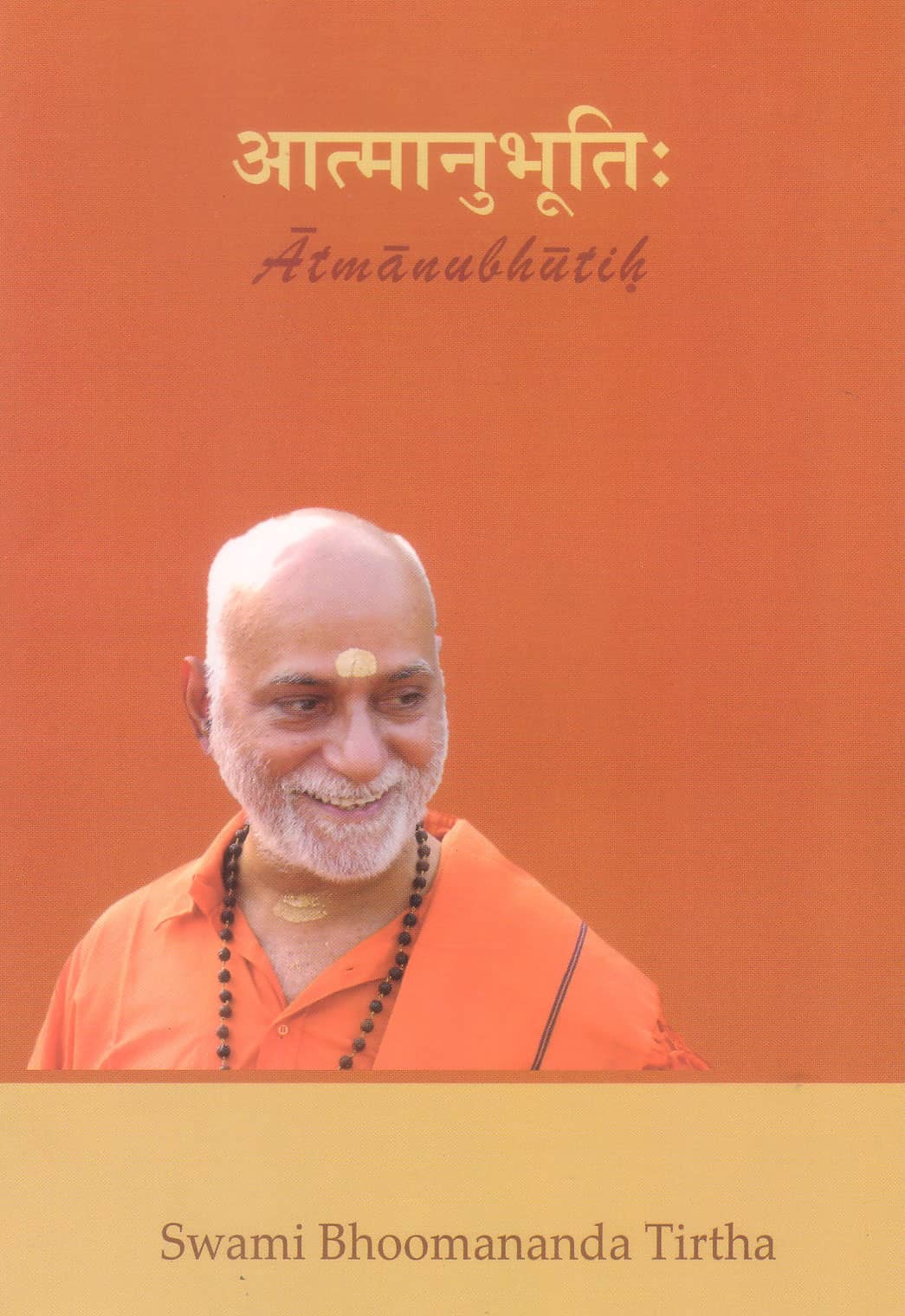Resources
28 | On Bhagavad Gita | Limbs of the Cosmic Yajna Cycle
Swami Bhoomananda Tirtha

In the behaviour of rains, Yajña that mankind performs in one way or another, has a decisive role to play. Yajña itself is a sublime derivative of the activity humans perform. All activities do not become Yajña. Only those done with the Yajña-attitude derive the status of Yajña.
Dear and blessed souls:
Harih Om Tat Sat.
Sentience – source of creational display
From the next verse (3.14) Krishna speaks about a cyclic course operating in the world to ensure the welfare of mankind as well as allied beings sourced and preserved by Nature. Thus, the war dialogue embraces various other factors bearing on human life.
It is true that we are living on earth, which is solid, upon which exist the seas, which are fluid. Surrounding both is air, which is gaseous. Then comes fire, a combination of heat and brilliance, both energies. Surrounding all the four matter and energy elements, is the infinite space, which is indescribably subtle, and yet material. All the pañca-bhūtas are thus a matter-energy aggregate.
Neither matter nor energy is sentient and hence both cannot give rise to any idea, thought or design. At the same time, the whole creation is full of designs, sequences, orders, rhythms, cycles and the like. All these are possible only because of a Master source of creative intelligence, which has the supreme potential to create, uncreate and also to bring about change in the created. Such a source will not be anywhere outside the pañca-bhūtas, for there cannot be anything besides them, as they alone fill the whole universe. Something, if at all, can at best only permeate the pañca-bhūtas in full.
Is there anything such? Are we able to have any clue to such a factor or presence? The answer is not far to find. Life forms began to emerge in water and earth, the primary elements. Naturally the source of this presence must be in them.
Sentient presence inside our body
Our body is fully a growth within the mother’s womb. The embryo grew from the mono-cellular level. The sperm and ovum joined, marking the birth of the embryo, which, drawing nourishment from the mother’s blood, began to grow within the womb itself, without any external factor coming to aid it at all. Life is thus traceable to the embryo’s cells themselves.
Our pāñca-bhaūtika body also has a supra-material, spiritual, plane within it. You cannot think of your body and all its functions without their full relationship with this inner spiritual plane. Likewise, our earth and the surrounding elements also have their inextricable connection with the spiritual plane within themselves.
Cycle that governs terrestrial beings
Krishna explains how matter is connected to the spirit and the two have formed a beautiful cycle, resulting in the birth and growth of living beings, for which food and nourishment as well as the rains necessary for the purpose become indispensable.
All these have a special bearing on humans, who alone hold the mento-intellectual resource in abundant measure.
See how Krishna enumerates a set of factors (3.14,15), which together constitute a wholesome cycle governing the entire life on earth. Most of this cycle as well as the sequence it embodies, is visible, while part of the cycle is invisible. The role of our intelligence is to take us from the visible to the invisible by the process of observation, evaluation and inference, the only means available for the purpose. Thought over well, Krishna’s pronouncement warrants full attention and thorough study and analysis.
Pañca-bhūtas interwoven with invisible sentience
Krishna is weaving a close connection between the visible pañca-bhūtas, which are seemingly inert, and something besides them, which is spiritual, divine and supra-human. He then links it to food, which alone gives rise to living beings.
Mundakopanishad (1.1.8) also states tapasā cīyate brahma, tato’nnam-abhijāyate – Brahman, the invisible spiritual substratum of all existence and display, gives rise to austerity, which is very subtle in nature. By that it swells and then matter, food, is born. Thereupon ensued prāṇas, the life forces, then the mind and the world of pañca-bhūtas designed by it, together with the various karmas, including that leading to immortality, liberation from the cycle of birth and death. From the indefinable Brahman, the Supreme presence, arose matter and energy, equally so the mind, the thinking and designing power, which gave rise to various actions, secular and divine.
Food – nourishing source of activity
Karma, activity, is a direct outcome of the food and nourishment a being derives regularly. This orderliness and what all it means, alone empower the creation to be what it is. Understand the place and purpose of food in preserving the mobile creation. Annadāna is held as the most valuable and rewarding offering, because hunger is common to all creatures. Its appeasement by food is also equally so. Anyone, including non-humans, cannot be appeased in full except by food. So, food is the most valuable gift for any being.
Rains regulate food production
Food in the form of herbs comes to be only when rains wet the earth. Yajña is the attitude and spirit of holiness and divinity imbued to whatever activity humans perform. This divine factor is what brings timely rains, favouring agricultural operations and allied matters upon earth.
Brahman – source of existence founded in Yajña
Brahman is the ultimate source and terminus for all existence and creational display. That Brahman is established in Yajña humans perform and pursue.
Forest and rain interconnected
All beings are born of food. They are an outcome of food and nourishment. Food is generated by rains, which wet the earth and make various seeds germinate and sprouts grow. They then begin to bear leaves, flowers and fruits, all of which become food in one way or another for mobile and immobile creations on the earth. Rains are an indispensable factor operating upon the earth. Their origin is hard to assess or predict. Rains originate forests. Forests, once they find their place, contribute to further rains.
The first plants and forests must have sprung on the earth following the widespread fall of icy asteroids orbiting in space. Thereafter forests and rainfalls were interconnected and remain mutual and complementary.
Beings emerge from earth, matter from Brahman
In the emergence of beings from earth, you clearly find the mystery of how inert matter (earth) on getting rains gives rise to life. In the same manner, the supreme presence, Brahman, gives rise to matter, which becomes food for beings, thereby the wheel of activity is set in motion.
In the behaviour of rains, Yajña that mankind performs in one way or another, has a decisive role to play. Yajña itself is a sublime derivative of the activity humans perform. All activities do not become Yajña. Only those done with the Yajña-attitude derive the status of Yajña.
Activities are twofold – secular and divine
Activities are prescribed in Vedas, the Treasure of Knowledge. They are twofold: Secular, those necessary for maintaining the body, like having food, clothing and shelter, the primary needs of human life. Everything else comes next. These have grown in their quality and variety, as culture and civilization advanced on the earth. But all of them come under secular activities and pursuits.
Then come the divine activities like singing hymns praising the higher powers, performing rituals and ceremonies, ranging from daily sandhyā-vandana to the most high and complex Yāgas and Yajñas, which call for elaborate preparations as well as huge expenditure. I say this only to indicate that all activities are described in Vedas, the Treasure of Knowledge evolved by our ancient thinkers.
Vedas themselves have emerged from the Imperishable presence, the substratum of the entire creational display.
Life evolved from food
Thus the entire life formed on earth, including that of humans, has evolved from food, which grows when the earth is moistened with rains. We cannot think of ourselves except as an outcome of food and nourishment, which the earth provides with the help of timely rainfall.
Varuna-mantra can invoke rain
There are occasions when rains get delayed or even fail. If that happens, people begin to do the austerity called Yajña in one form or another. And rain falls. The favour and disfavour of timely regulated rainfall do depend upon the divine element called Yajña, which rests on people in general.
During the powerful rule of Shaktan Tampuran, a legendary king of Kochi, Kerala, one significant event transpired. He was given to experiment and research. He did not take to superstitions at all. Once his whole kingdom was affected by severe drought.
He was a traditionalist. So he hit upon an idea. He was in Thrissur, the cultural capital of Kerala, at the time. He called all the Vedic scholars nearby and asked them whether they believed fully in Vedas. Their answer was a doubtless affirmative.
He continued: “Are there not specific chants in the Vedas addressed to Lord Varuna to please Him and seek His favour?” They emphatically said “Yes’’. He then said: “I want you to sit on the steps of the huge Tank (Vatakke-chira) and recite Varuna-stuti and bring down rains. Do not get up before you get drenched in water!”
They sat on the steps of the tank and began their Varuna-mantra recitation. Now and then the king would walk in front of them with his sword in hand!
Strangely, in a matter of hours, it rained profusely. The tank was getting filled, surprising all around. The scholars sat on the steps and continued chanting until their thighs and abdomen got immersed in water.
Amrita-varshini is a very special Carnatic musical rāga. It is said to bring down rain, when properly sung. It was experimented successfully in Shoranur of Kerala.
Yajña – a means to attain Brahman
Brahmā, the intelligent, creative source, emerges from the Supreme Reality, called Brahman. Supreme Brahman is established in Yajña, which is linked to the great cycle. Yajña brings rain to generate food and nourishment to the earth’s creatures, but also enables the seeker to attain the Supreme Brahman, the ultimate goal of human life.
Of the limbs constituting this great cycle, rain is the variable and unpredictable one. However, its erratic nature is subjected to the Yajña potential and magnitude mankind displays with dedication.
The same Yajña also leads the seeker to realize the Supreme. To live and act without delusional clinging is the best sacrifice, Yajña. And every one has a full option to adopt this and excel in it. What more does a good and rational human need for his own fulfilment as well as society’s welfare?

“Neither matter nor energy is sentient and hence both cannot give rise to any idea, thought or design. At the same time, the whole creation is full of designs, sequences, orders, rhythms, cycles and the like. All these are possible only because of a Master source of creative intelligence, which has the supreme potential to create, uncreate and also to bring about change in the created.”
“From the indefinable Brahman, the Supreme presence, arose matter and energy, equally so the mind, the thinking and designing power, which gave rise to various actions, secular and divine. ”
“Yajña is the attitude and spirit of holiness and divinity imbued to whatever activity humans perform. This divine factor is what brings timely rains, favouring agricultural operations and allied matters upon earth.”
“Brahman is the ultimate source and terminus for all existence and creational display. That Brahman is established in Yajña humans perform and pursue.”
“To live and act without delusional clinging is the best sacrifice, Yajña. And every one has a full option to adopt this and excel in it. ”
you might be interested in

Swami Nirviseshananda Tirtha
075 – by Swami Nirviseshananda Tirtha – Voice of Upanishads

Swami Bhoomananda Tirtha
054 – Bhagavad Gita – Swami Bhoomananda Tirtha – Mind – The Fountain of Happiness

 1556 views
1556 views

 Add to Favorites
Add to Favorites Add to Reading List
Add to Reading List








